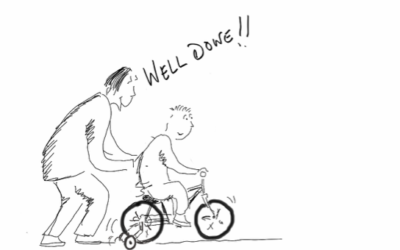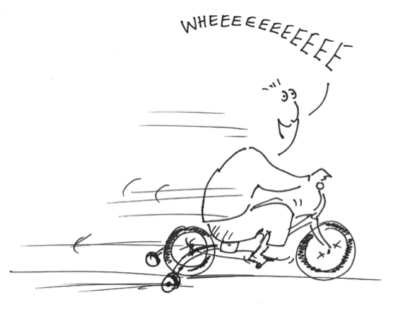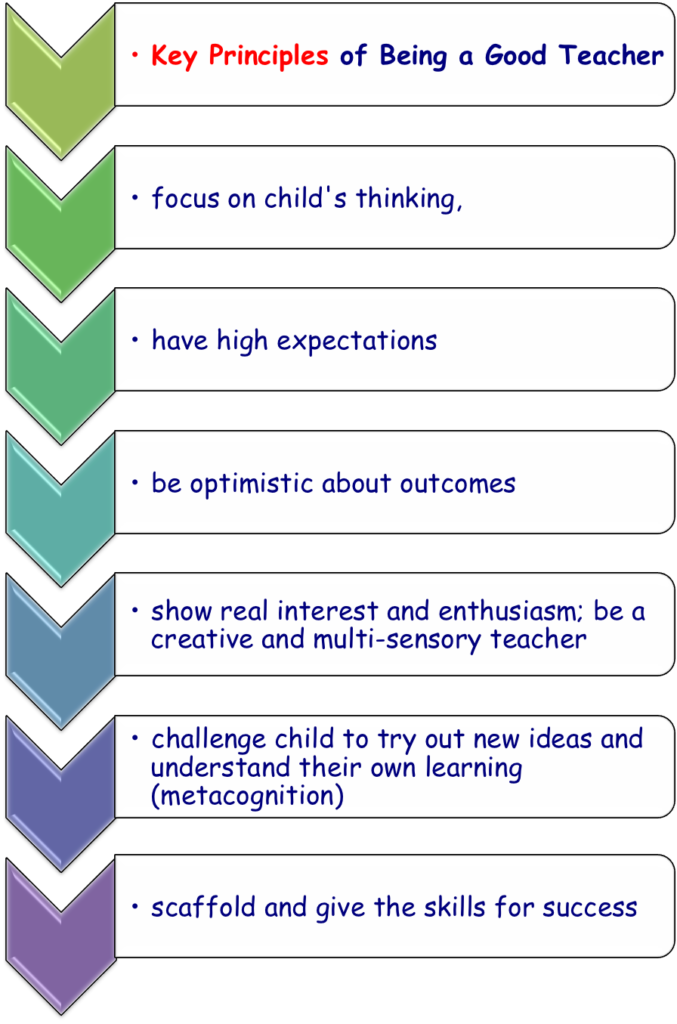Teaching Philosophy

Big elephants always help small elephants!
- Self-esteem
My whole philosophy of teaching is based on building the self-esteem of the child or student. This does not mean giving the student overall praise for everything they do but rather the praise needs to be very specific and warranted.
It is up to the teacher to provide the ‘scaffolding’ and support, to enable the students to gain success in any given task. There is no doubt about it; ‘Success breeds success.
- The Theory:
Vygotsky’s Theory of the Zone of Proximal Development (Do not be put off by the title, it makes so much sense!)
The Russian psychologist Lev Vygotsky (1896-1934) was primarily concerned with understanding the origins of children’s knowledge. According to Vygotsky a child’s learning of new cognitive skills is guided by an adult (or someone more skilled than the child is) who models and structures the child’s learning experience, a process Jerome Bruner later called ‘scaffolding’.
Such new learning, Vygotsky suggested, is best achieved in what he called the zone of proximal development – that range of tasks which are too hard for the child to do alone but which he can manage with guidance. As the child becomes more skilled, the zone of proximal development steadily widens, including even harder tasks. Vygotsky thought the key to this interactive process lay in the language the adult used to frame the task. Later the child could use the same language to guide his independent attempts to do the same kind of task.
An analogy: bicycle stabilisers
An analogy I use when explaining this to teachers is for them to imamagine they want a child to learn to ride a bike.
- You wouldn’t just give a child a bike and tell them to ride it. It would end in tears, frustration and failure.

- You could give the child a tricycle and without any skill, they could ride it. There is no improvement to be gained and little sense of achievement.
- So you give the child a bike. First, you supply the bike with stabilisers and a supporting hand from someone older who possesses the qualities of stamina, patience, positive verbal reinforcement and a belief that the child will succeed.

- For a while the child relies heavily on the stabilisers and the comfort of the supporting hand, but as they gain confidence, they suddenly realise that the stabilisers are hardly touching the ground and they are bicycling on their own. The person who was supporting them is no longer doing so, in fact they can barely keep up!

- The child is ready to ride the bike on their own, confident in their own ability, loving the freedom and with a great grin on their face. It is obvious how this analogy applies to education: have high, but not too high, expectations and support and scaffold until the child becomes confident enough to complete the skill required.

- What is Accelerated Learning?
Acclerated Learning approaches are based on the way that the brain works and people learn. I try to make sure that my teaching combines all the approaches so that the most effective learning can take place.
To create an accelerated learning lesson several factors have to be in place;
- The student’s physical state needs to be good (temperature is cool, the windows are open, they have some water to drink and a little ‘brain food’ such as fruit or nuts to eat.)
- The student’s emotional state needs to be calm and positive.
- Music is used in a structured way.
- Learning is scaffolded and supported but at the same time challenging, with high expectations.
- Praise should be specific and well-deserved. The students should feel that the teacher is totally supportive, positive and believes in them.
- Inclusive learning activities are planned so that all learning styles and intelligences are respected.
- The lessons are sequential and cumulative, building on what has been learnt before.
- Breaks are included which may contain some light physical activity such as ‘Brain Gym’ (or press-ups for energetic boys!)
- A variety of multi-sensory teaching methods are used, including thinking skills and visual tools.
- Study skills such as mind mapping and memory techniques are used as an integral part of the lesson.
- Students are encouraged to review their own progress and set personal goals.
- The lesson should be evaluated in consultation with the student and parent.
If you do all this, you are on your way to becoming the perfect, dyslexia-friendly teacher and your students will benefit beyond their wildest dreams!